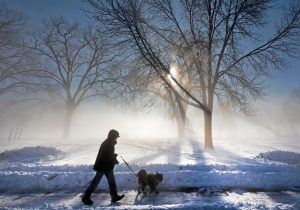
Memorial Day weekend weather can be absolutely glorious in Wisconsin or it can be rainy and cold.
Perhaps no other major holiday suffers from such a Jekyll-and-Hyde split in our expectations, and there are really good scientific reasons that underlie this duality.
By the end of May the Northern Hemisphere is just about over the prior winter and the cold air that characterized it is almost completely left to very high latitudes where the longer days act quickly to erode what is left even near the Pole.
The process of “shedding” the cold air from winter sometimes involves the excursion southward of regional cold air vortices in the mid-troposphere, which meteorologists refer to as “cut off” low pressure systems.
If such a cut off low parks itself over the Great Lakes states, the weather is often persistently showery and chilly. This is because the air at about 3 miles above the ground is colder than normal in such a circumstance and, coupled with the relatively warm surface temperatures of late May, the atmosphere is made less stable and the threat of showery weather increases substantially.
These cut off lows can persist for several days in a row. It turns out that the seasonal maximum for such cut off lows over our area runs from mid-May to mid-June. Consequently, Memorial Day weekend can be plagued by the presence of one.





